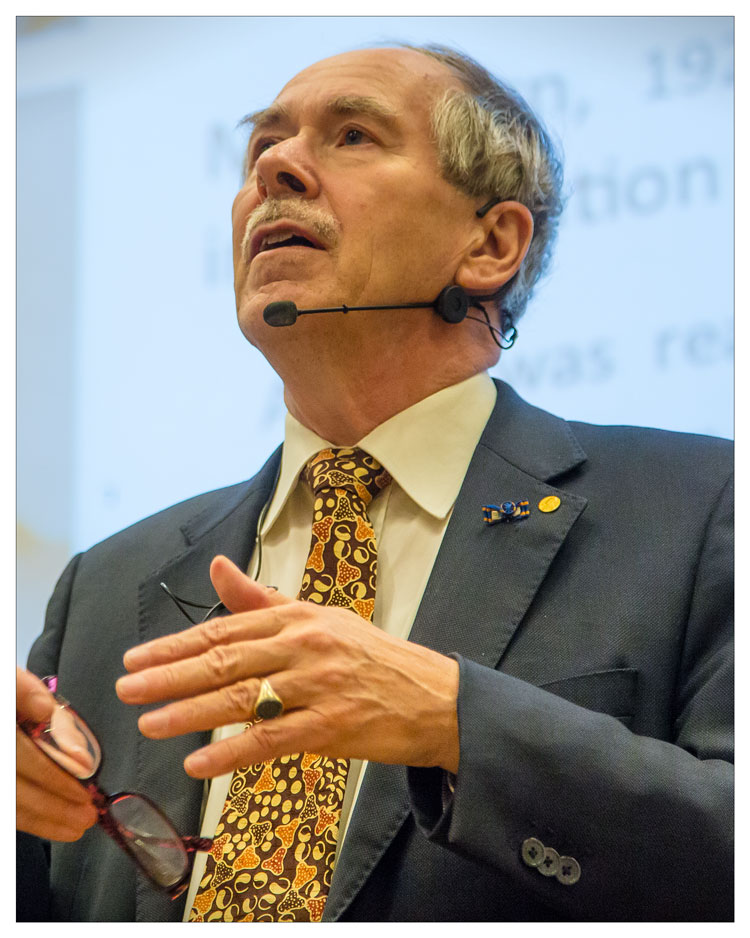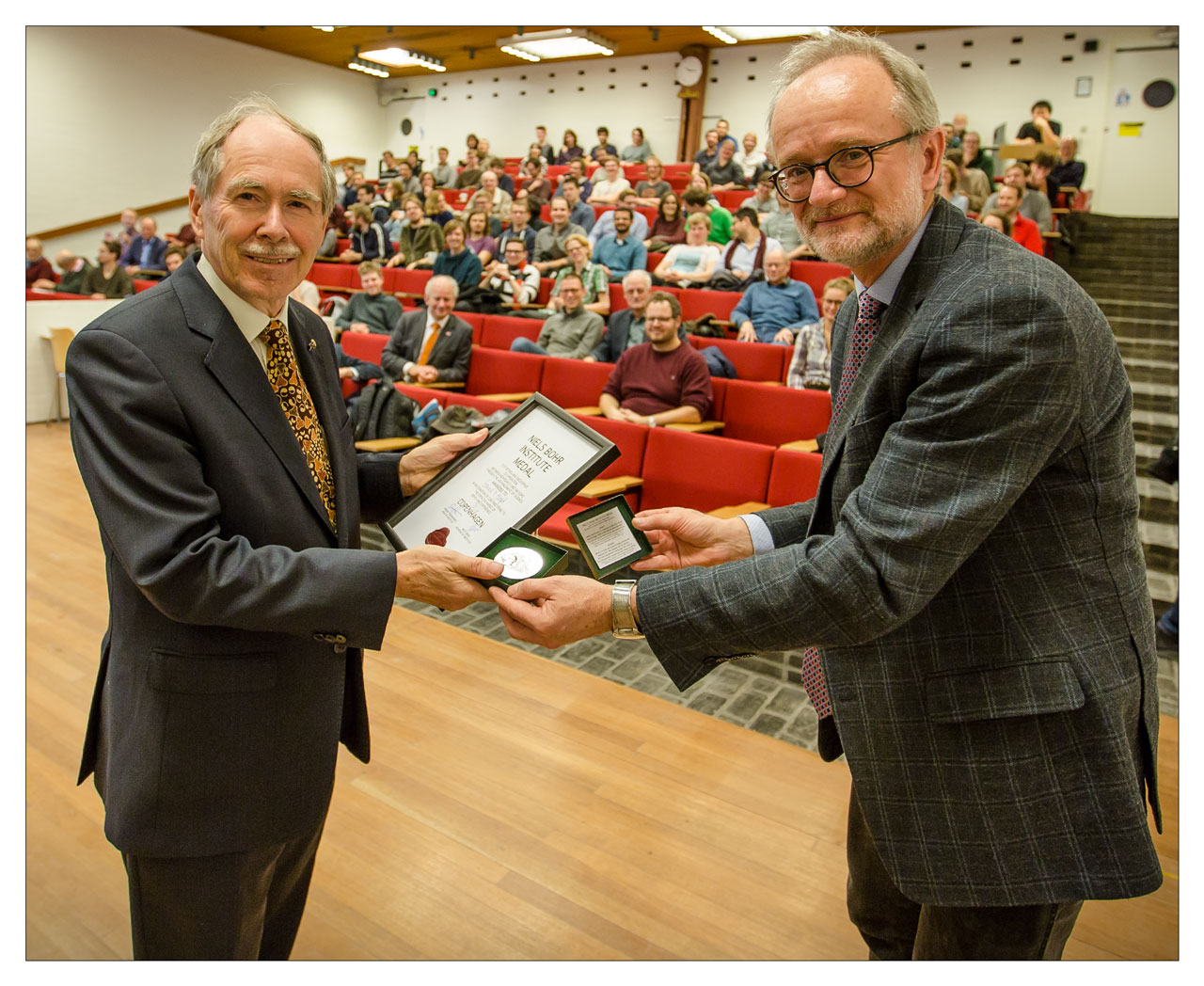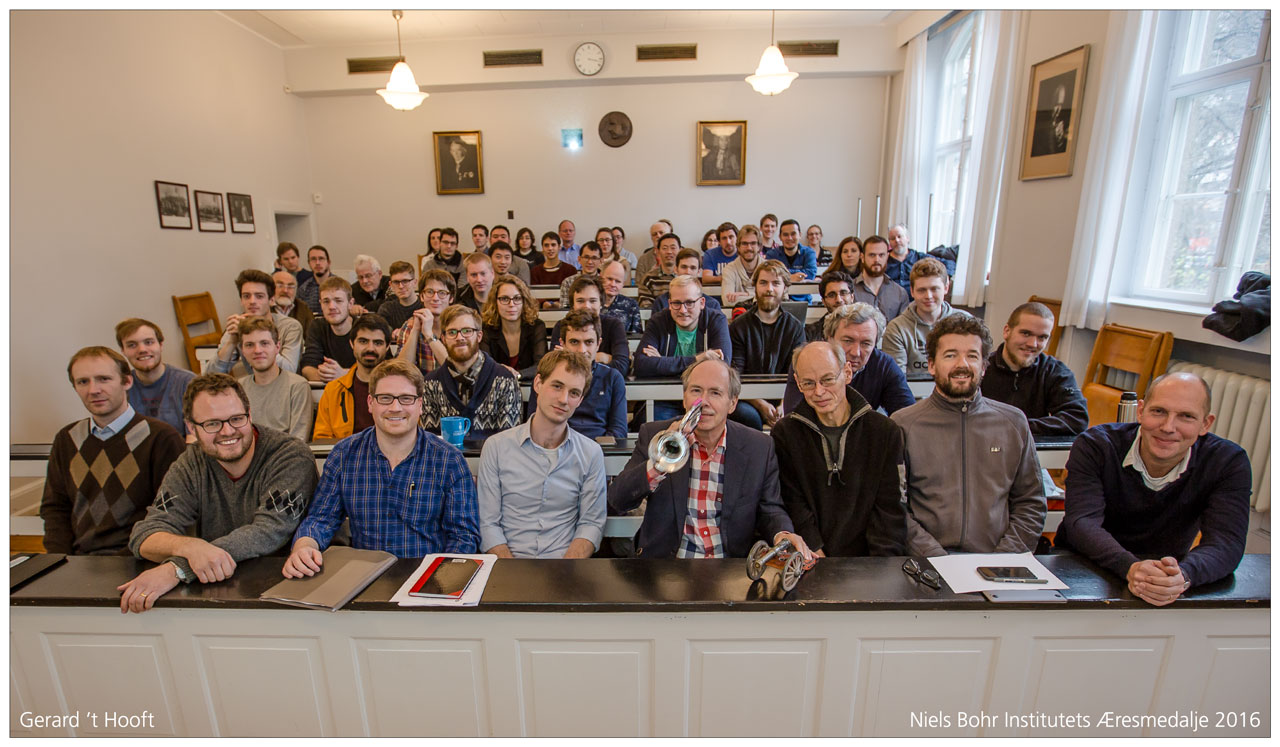Gerard ’t Hooft receives the Niels Bohr Institute Medal of Honour, 2016
The Dutch professor of theoretical physics, Nobel laureate Gerard ’t Hooft has been awarded the Niels Bohr Institute Medal of Honour, 2016 for his groundbreaking work on black holes, quantum gravity and quantum field theories.

“Gerard ’t Hooft is one of the world’s greatest living physicists. He is a great thinker and his work has had an extraordinary influence on physics. It is virtually impossible to find a scientific article about theoretical high-energy physics without the name ’t Hooft being included, as many of the key concepts are named after him, for example, ’t Hooft monopoles, ’t Hooft operators and the ’t Hooft limit.
Many of his ideas form the basis of modern physics concepts such as the renormalisation of quantum field theories and the holographic principle,” explains Charlotte Fløe Kristjansen, Professor of Theoretical Particle Physics and Cosmology at the Niels Bohr Institute.

Charlotte Fløe Kristjansen explains that Gerard ’t Hooft is a good friend of the Niels Bohr Institute, which he has visited numerous times and held lectures and seminars, and despite his international fame and numerous awards and honours, he can always find time to attend events at the Niels Bohr Institute.
Even when he had just received the Nobel Prize for Physics in 1999 and everyone was competing to get a visit from Gerard ’t Hooft, he chose to visit the Niels Bohr Institute, where he on that occasion gave the first lecture in the series of Niels Bohr Lectures.
For this close connection to the Niels Bohr Institute and to honour Gerard ’t Hooft’s important scientific work, he has been awarded the Niels Bohr Institute Medal of Honour, 2016.
“Niels Bohr was an extremely prominent and influential researcher of atomic theories around the first half of the 20th century. Therefore, a medal that bears his name means a lot to a theoretical physicist.
Working in Copenhagen, Niels Bohr was the one who first formulated an atomic model that could explain a lot about the behaviour of atoms, making him one of the founders of modern quantum mechanics,” Gerard ’t Hooft.

Ambitious boy dreams
Already as a young boy, Gerard had ambitious dreams for the future. When a teacher asked him what he wanted to be when he grew up, he replied, “a man who knows everything” – when he was eight years old. He would have said “professor”, but he had forgotten the word.
What he really meant was “scientist” – one who unravels the secrets of the fundamental laws of nature. Despite his young age, it was not so strange a wish as there was both a Nobel laureate and several professors in the natural sciences in his family.
So it was in the genes and it was in the environment. His father was an engineer and worked in the navy with large cruise ships and he thought that if his son was so interested in the phenomena of nature, it would also be easy to get him interested in becoming an engineer, but Gerard protested: “Those things have already been discovered by others. I want to explore nature and discover new things.”
And so it was. Gerard ’t Hooft became a physicist. He studied at the University of Utrecht and his great desire was to work with what he regarded as the heart of physics, the elementary particles. While still a student, he wrote a paper about Yang-Mills theories. He found the theories elegant and unique, but they were also considered to be useless as they described particles that did not exist in nature. When he began his doctoral studies, he focused the role of Yang-Mills theories in electroweak interactions.

“Gerard ’t Hooft’s PhD dissertation led to a breakthrough in the understanding of Yang-Mills theories through the invention of a procedure known as renormalisation and for this work he received the 1999 Nobel Prize in Physics for elucidating “the quantum structure of the electroweak interactions in physics,” explains Charlotte Fløe Kristjansen about Gerard ’t Hooft, who is now receiving the Niels Bohr Institute Medal of Honour.
“I have had close relations with the Niels Bohr Institute in Copenhagen for a long time, and I am looking forward to the opportunity to visit again,” said Gerard ’t Hooft before the reception.
Gerard ’t Hooft received the Niels Bohr Institute Medal of Honour, 2016 at a ceremony on 30 November 2016 at the Niels Bohr Institute in Copenhagen.

